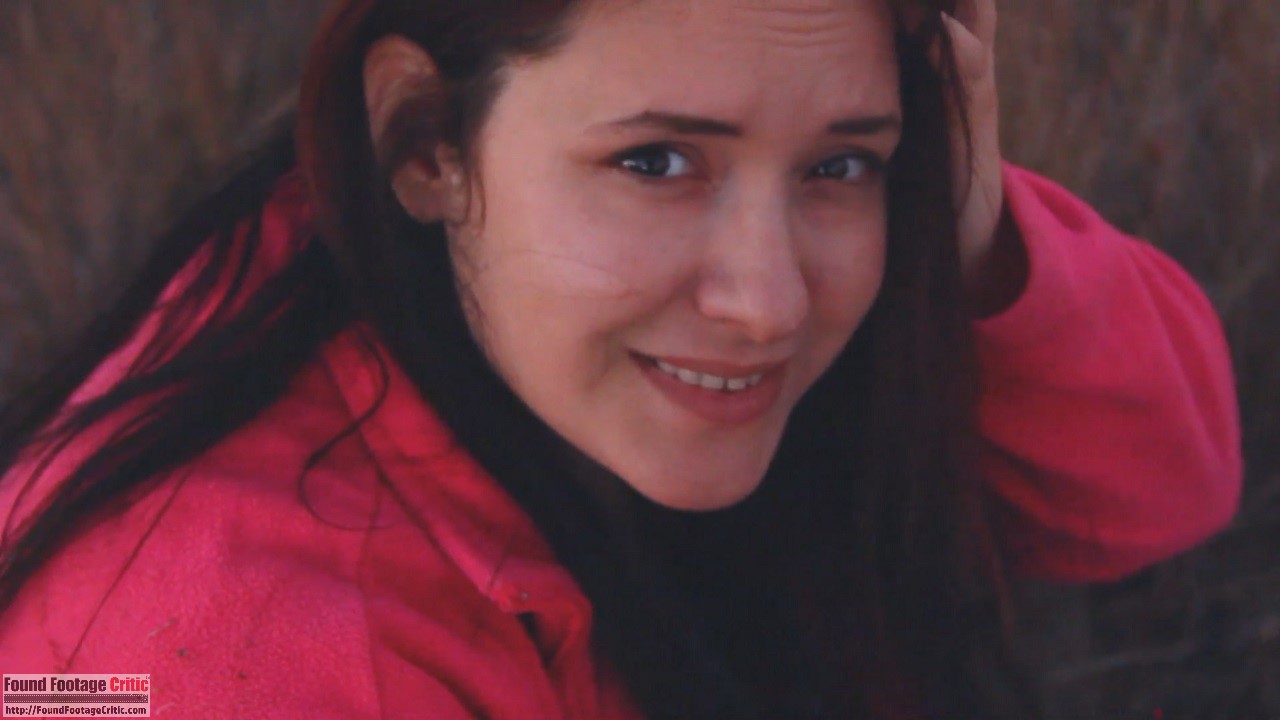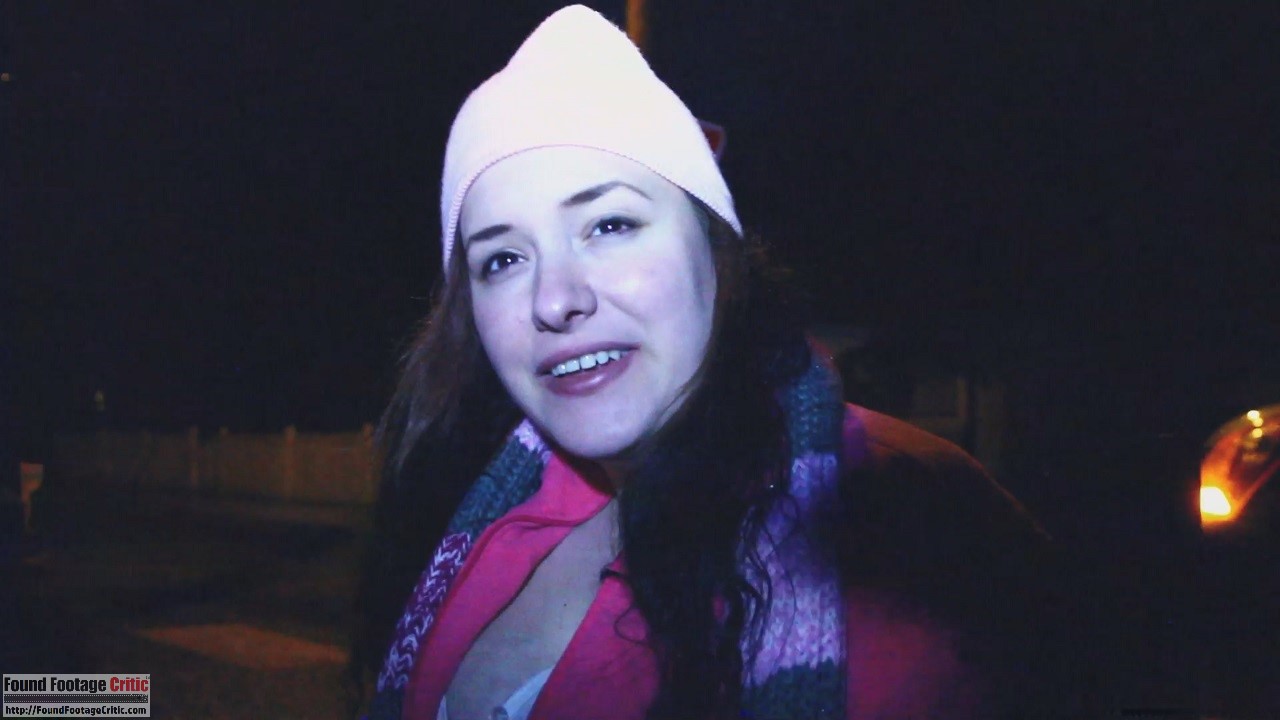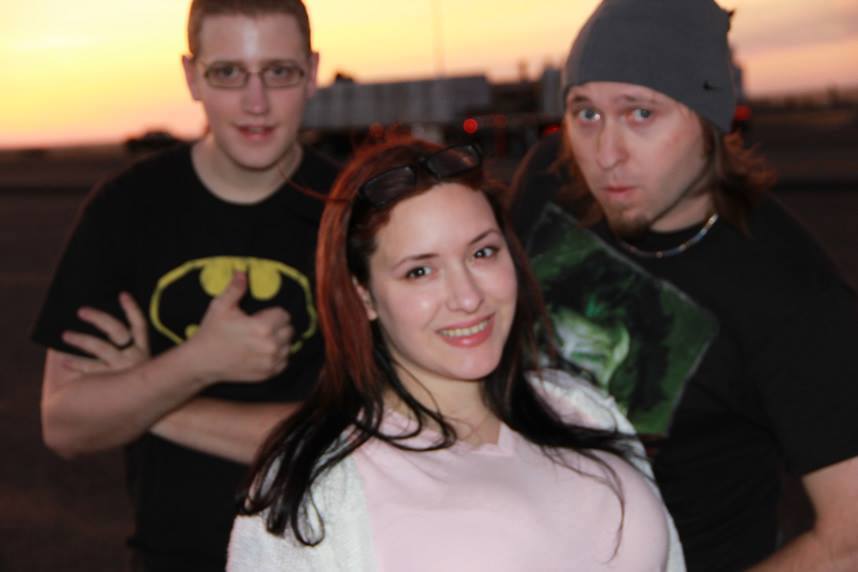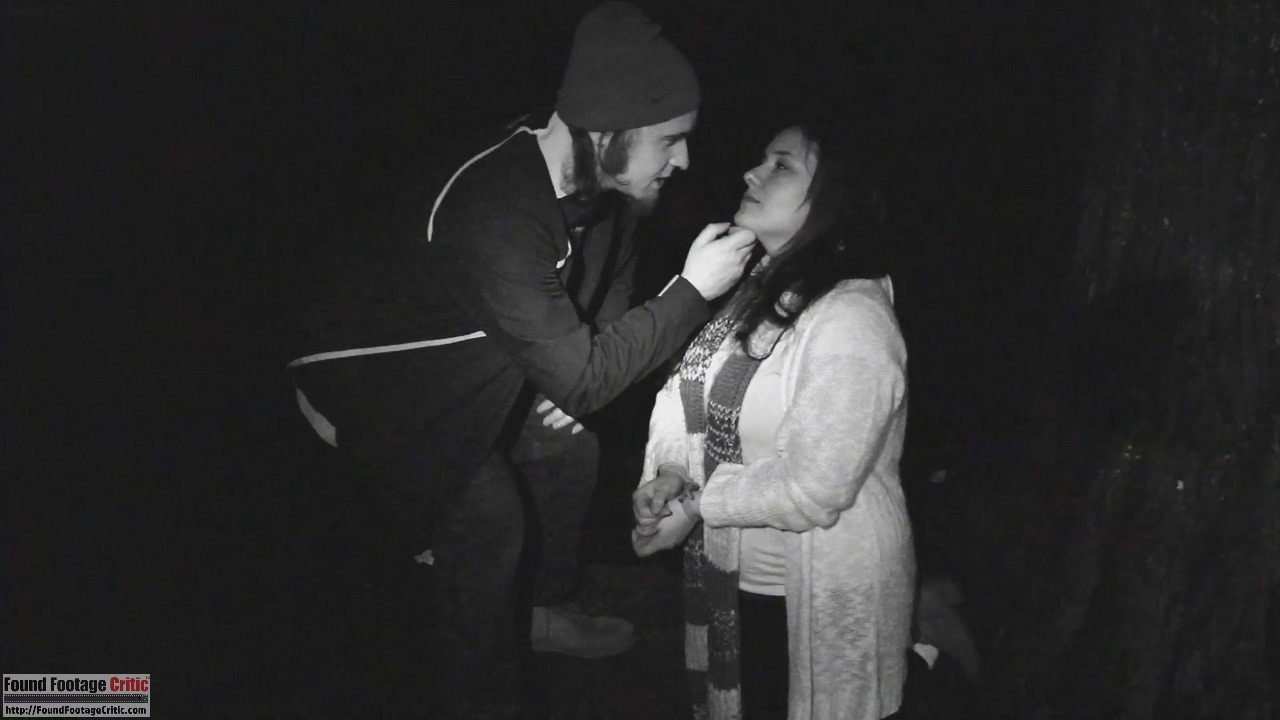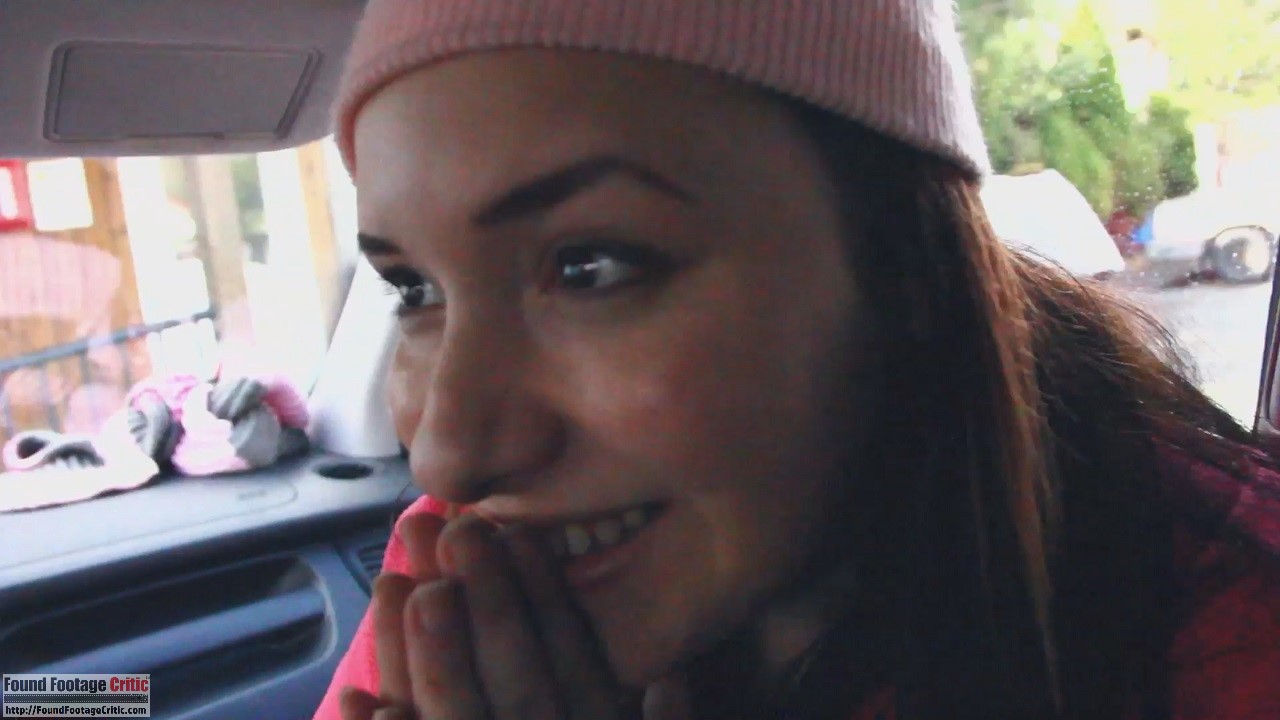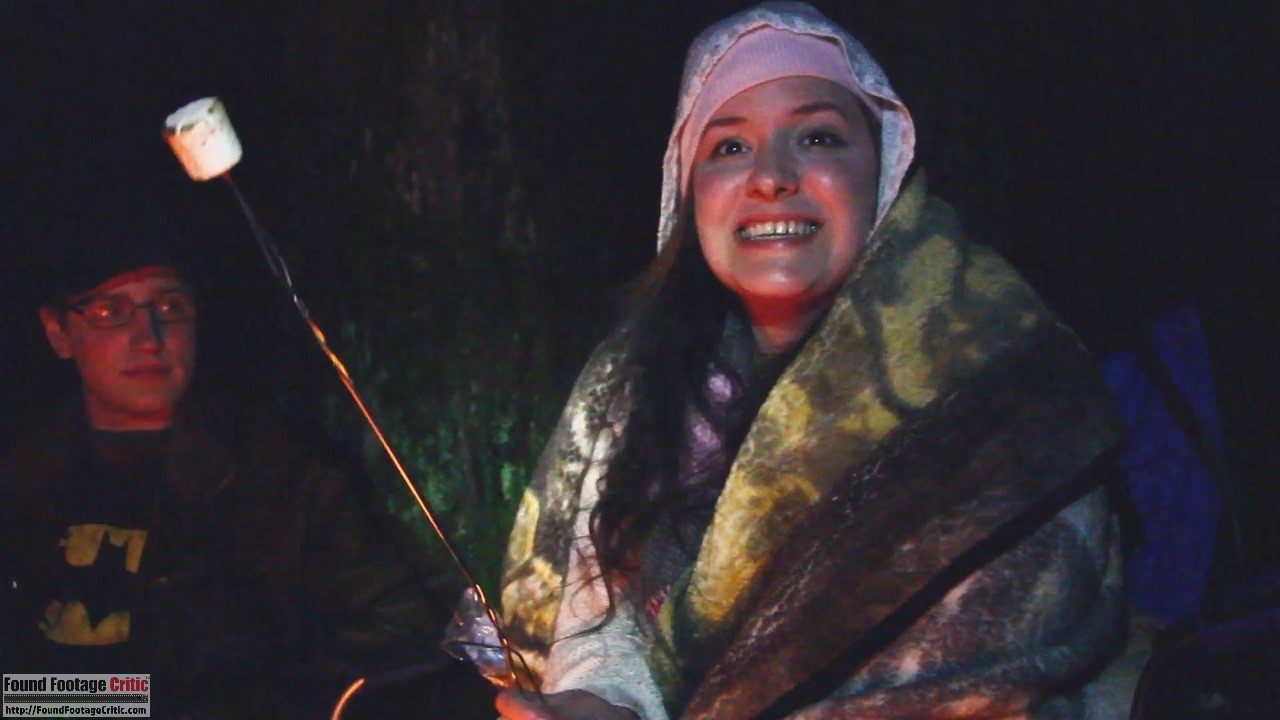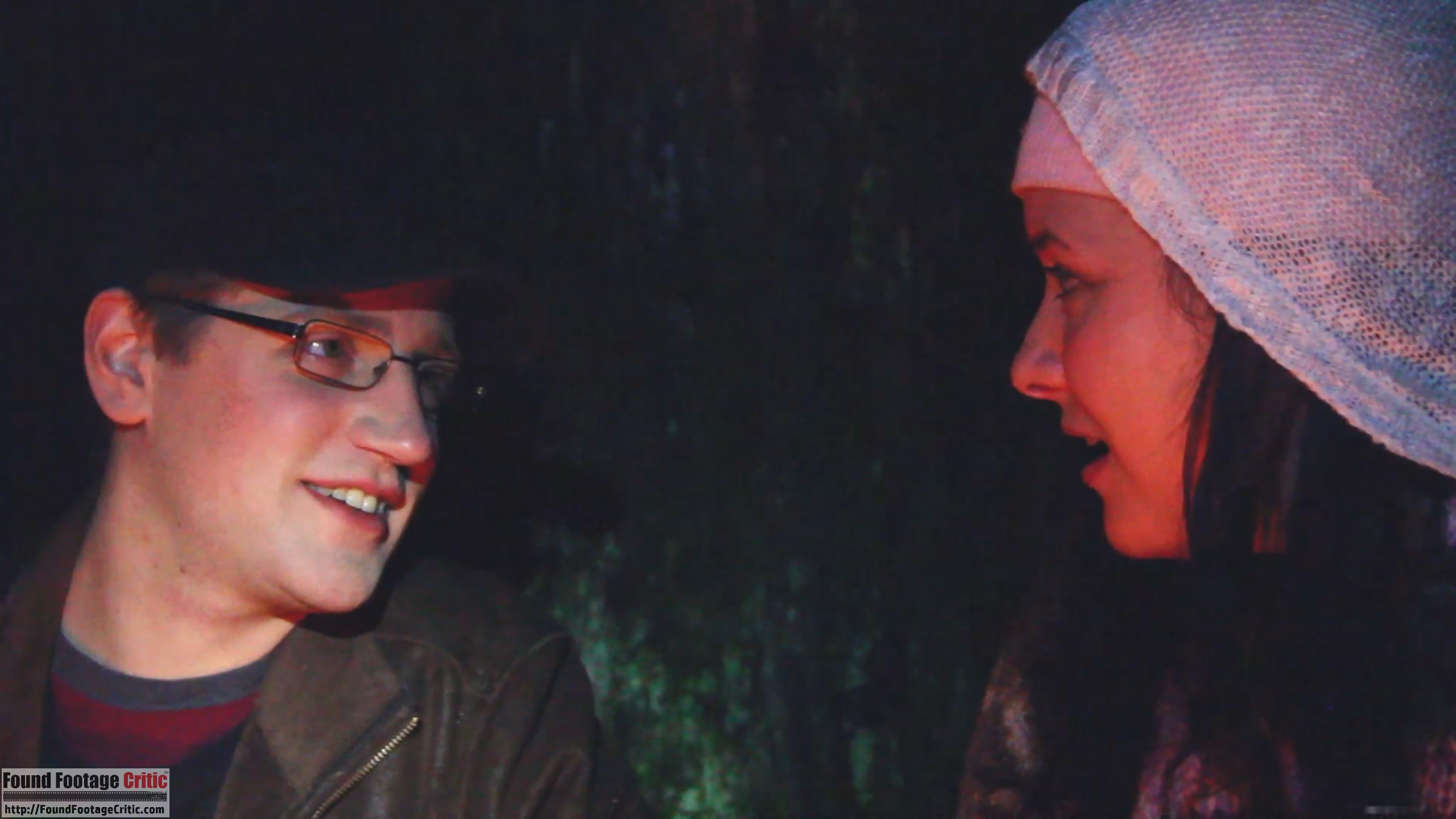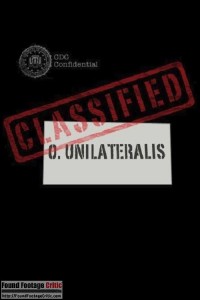 Found Footage Critic recently sat down via Skype with writer/director/actor/indie horror auteur Michelle Nessk, who wrote, directed, and starred in the upcoming found footage horror film O. Unilateralis (2016).
Found Footage Critic recently sat down via Skype with writer/director/actor/indie horror auteur Michelle Nessk, who wrote, directed, and starred in the upcoming found footage horror film O. Unilateralis (2016).
Proudly based in Seattle, Nessk has been working in the industry since 2007, including as a talented special effects artist, having studied under the legendary Cleve Hall. In addition to working in film, Nessk is a certified dance instructor, model, writer, and artist.
In O. Unilateralis, Nessk challenges the foundations of the genre with a bold, feminist-edged deconstruction of horror and found footage tropes. In this no-holds-barred interview, Nessk discuss O. Unilateralis (2016), along with thoughts on film, gender politics, rape culture, why horror is a comfort, why Woody Allen is the worst, and the future of found footage.
Warning for language and discussion of sexual violence.
Breaking into the Industry
FFC (HN): How did you become involved in the film industry?
Because indie filmmaking is not lucrative. Tell your kids to go to school to become a lawyer.
Michelle Nessk: I started out doing child modeling first when I was sent to New York. So, I spent some time there as a little kid, just a tater tot, living in a photography studio. I started doing acting; plays and that kind of thing. After that I started making films as a kid. Schools would let me borrow their cameras and make films. I wrote my first play when I was in third grade. It was called The Witch of Diamond Valley, and it was about a witch who everyone thought was evil—because she was—but she was also super misunderstood, because everyone else around her was stupid, and they made her evil. She was just frustrated. We got to put that on for the entire county school. I went into high school and started working in the A/V club, that kind of thing, and again, utilizing cameras, making shorts, usually horror, of course.
As far as super-professionally, I started doing television commercials, and then I started working with different companies locally out here in Washington. One of the first, most notably for me, is Handcrank, where I got to do the special effects makeup, and I was multiple zombies in their Mackey Speaker commercial. I had already been doing indie film before that, but that was my first real push into something mainstream and commercial. Since then, I’ve done extras work, as far as mainstream, and then commercial work. Everything else that I’ve done film-wise has been in indie. I get hired onto other people’s stuff, but mostly I work by barter, so I can take a film and come out with a really good production value with more money than I’d see in two months. Because indie filmmaking is not lucrative.
Blood and Guts and Effects . . . Oh My!
FFC: What interested you in special effects makeup?
Michelle Nessk: Growing up, I was exposed to a lot of horror films. My mom can’t stomach them now, but it used to be all the time. If I got to stay up late it was because we were watching a horror film. So, between her and my uncle they showed me a lot of horror movies, and some of the special effects in it, like in Ghoulies, had the special effects work from Cleve A. Hall, Sy-Fy’s Monster Man. And the works of John Carl Buechler on Troll. You know, just great films, if you’re into that kind of thing. I am. I wanted to do what they did. I wanted to be able to make people as squeamish as their work did. My brothers, my cousins, and myself, we used to freak out our elders. I would make special effects makeup with food coloring and corn syrup or sometimes honey, if that’s all we had. And guts. We wasted a lot of food, and it’s not like my family was rich, so we were kind of assholes about that. I learned so much! So, we would set ourselves up, and it was usually the youngest, because everyone’s more squeamish about the youngest getting hurt, for some bullshit favoritism. We would dress up the youngest in that gore and have them run out like this. Every single time, never missed a beat, they’d be freaked out every single time, and every single time, they’d be like, “Don’t you remember the boy who cried wolf!?” And we’d just sit there like, “Yeah.” “That sausage was expensive!” “Yeah.”
I’ve met some really amazing female filmmakers and producers in the industry and especially the indie industry.
I started doing it to prank the elders. I liked giving them hell. And then I started doing it when I was making my own films. I did the special effects makeup when I was in third grade for The Witch of Diamond Valley. Then, I started pursuing it seriously. And, then, I think it was 2012, I met Cleve Hall. It was my first year doing Horrors of the from Crypticon Seattle, and he was one of the special guests. [Horrors of the PNW is Nessk’s annual showcase covering highlights from the horror convention Crypticon Seattle].You know how they say be careful when you meet your heroes, because you might be let down? This was not the case. Not the case. When I first met him, actually it was him moshing with all the attendees at the after-hours dance party. That’s how badass he is. I went and moshed by him, and then I had to take off because I had to go do an interview. I think the interview was actually with Lew Temple [actor best known for The Walking Dead]. So, I ended up talking to Cleve at length afterward, and we got to interview him. He was kind of my white whale that year. I also got to meet J.C.B. that year. Cleve actually was willing to sit down and talk with me at length about his techniques that he used for Ghoulies and for Yo Gabba Gabba, which he won the Emmy Award for. He had some really good tips, and then we became friends. And then I asked him if he’d be willing to take me on as his apprentice. To which he obliged. I think it was because he liked my living dead flesh that I make. It’s a mineral powder base that I make myself, and it’s a beautiful hue of blue, but when you put it on it gives you every single color. It looks like it’s just blue, but it gives you yellows and greens, and it’s not a shimmer, so it goes on like a matte base. It cuts at least three hours out of your special effects time frame to make somebody look dead. And, it doesn’t cause any issues with appliances—because some makeups they’re too greasy so when you try to put on appliance it starts peeling off. This stuff doesn’t do that.
FFC: What are some things that attract you to the horror genre?
Michelle Nessk: It’s a comfort thing. Some of my best moments as a child growing up were snuggled up with my family whenever I was visiting whichever family I was staying with at that time. They all had this standard tradition of “we’re gonna watch scary movies.” So, we’d hold pillows and sometimes we’d pull cushions off the couch and just bundle up like puppies or kittens and just watch scary movies. So, I have a different reaction than a lot of people when watching a scary movie, because when I’m watching I feel comforted and warm and I’m all like “aww!” Best memories ever.
Challenges of Working in a Male-Dominated Industry
FFC: Female and non-male writers and directors are a minority in horror filmmaking. What are some of the reasons you think that is, and do you ever feel like an outsider in the genre?
Michelle Nessk: That’s an interesting question, especially nowadays. I’ve met some really amazing female filmmakers and producers in the industry and especially the indie industry. People don’t realize that it’s getting to the point where it almost is female-dominated. Same with literature and with journalism. The only time I ever feel like an outsider is when people knowingly work with someone I never would, because they’ve gotten in trouble for exploitation or something like that, or stalking or harassment; and they’ll still get work because they’re bros. And that shocks me. It really does. I fear at this point that I’m probably desensitized to that. So, when I see it, I just kind of mentally put a red X up for that, and then I work with different people instead, because there’s no lack of filmmakers anywhere you go.
At points it can feel like being an outsider, but if you actually just push your tentacles a little bit further out there and persevere beyond the little groups of such types, you’re gonna find that there are people who are of mixed ethnicities, and they work well together, and you could even find yourself a filmmaking family of really good people with strong moral values; and by moral values I mean just treating people well, where entitlement never gets in the way. I guess it’s kind of a fifty-fifty question, with a fifty-fifty answer. It just depends on who you’re dealing with.
FFC: Where did some of the inspiration for O. Unilateralis (2016) come from?
Michelle Nessk: The inspiration for O. Unilateralis (2016) I came up with in 2012. This is two, almost three, years before I met Hunter Bosley [Troy] and Danial Fields [Keith]. First, do you remember the CDC chemical spill at the airport that happened in May of 2012? And then after that, we had the outbreaks of rashes that happened I think at two different schools at first. And one of them was at a game, so people who were at this—I think it was a football game, but I might be mistaken. They had hazmat come out. Then, there was a school bus from another away game, and a rash broke out, they claimed from chemical cleaner, a little coincidentally. And, then there was the anesthetist who had absolutely no criminal or drug history, and he was just driving erratically and when the cops had to pull him over, they had to incapacitate him. And, of course, the Miami zombie. And then there were people at the airport when the CDC had that chemical spill, who went back home to Poland, and I think one person went to China, then we had a face-eating incident in Poland and then we had a face-eating incident in China. And then we had the Jersey Devil, where the fellow was ripping out his intestines and his guts and using it as ammo against the police officers. This was all within the course of a summer. That’s crazy. And they were blaming it on Krokodil and bath salts, but the thing is that bath salts and Krokodil don’t have those effects on people.
So, I was sitting there and thinking about it, and I like coming up with conspiracy theories. I’ma storyteller, so it’s just in my nature to do so. So, the whole thing was a connect-the-dots, and then in the end I figured it had to be some kind of super-rabies, but then again they were coherent. I mean, people can be coherent on regular rabies, but, in my mind—I mean, I’ve never seen super-rabies–but I assume super-rabies, you’re just like “Bleh!” So, I figured it has to be a parasite, since we’re also drilling into the icebergs and pulling out samples, and we found these various spores, and some of these spores were very closely related to the O. Unilateralis (2016), the ophiocordyceps. Then, there were a couple of cases where birds and some mammals actually had it, so it was beyond bugs, and so I was like, “What if? You know, what if this is what they’re doing?” And, so, I wrote an outline for it, and then when I met those guys we were trying to figure out a film to make, and I was like,”Well I’ve got this one story that I have bulleted.” And Bruce was like, “Oh, write up a script. Let’s see it.” Because, initially it was just supposed to be a short. So, I wrote up a script and it was much longer than that. After that, we started working on it.
Gender Politics on Film
FFC: You’ve identified as a feminist. How did your feminism and your views on gender politics in general come through in the film?
Many times, my family would be like, “Don’t raise your voice so much,” while I’d be on the phone. And I’d be like, “Because it’s important!”
Michelle Nessk: Quite a bit. When I was debating plot points that were needed for this film, that’s actually where a lot of it came from. There were a couple of points where I was approached by them and they were like, “Oh, Troy seems just… too rude at this point.” And I’m like, “He’s an entitled bro-bag. What do you think he’s gonna do?” They didn’t understand a lot of it. They didn’t understand Abby, and they were like, “Why would Abby put herself in this predicament?” And I was like, “Why does any girl put ‘herself’ in this predicament? How is she putting herself in a predicament, and you guys are blaming her for this, when the reality is it’s the action of the person who wants to be the offender that is to blame.” So, she’s just some girl. She’s a normal girl, and she might seem naive, but have you met many homeschooled people? [laughs] Oh my gosh. Some of them, I’m just like, “Let me show you all the terrible things.”
And then at points when they were like, “Why would Troy be so obvious? Why would Keith not say something sooner?” And I was like, “Because we’re doing this based on reality.” This isn’t just some simple plot synopsis: someone says something bad, and the conversation goes back and forth. This is really supposed to be a reflection of real life, and what happens to people in the real world. And, in the real world, there are people who hang out and they’re like, “Oh, I bet we could gangbang her,” And, then the other person says, “Nah, I don’t think they’d be into that.” And then the other person would joke and say it doesn’t matter. And they’d just move on, leaving countless women and defenseless individuals alone with that person. And when somebody finally does come forward, and says that something has happened to them, that same person who heard them say that, is usually gonna say, unless they walked in on it, seeing it for themselves, “Nah, he’s always been cool. That’s my friend, that’s my bro.”
So, it was really important to me that those details wouldn’t be lost in translation, because I wanted people who have experienced it for themselves to see it and not feel like it’s a situation that’s objectified by somebody who doesn’t understand it, but instead somebody who does understand it. And, in that way, even though it’s a horrible situation, they feel a sense of relief, in that there’s somebody out there who does actually understand what they’ve gone through and what they’re afraid of experiencing. That was the most important thing to me. I wanted to give a voice to the people who smile at rape culture, because they’re taught to be polite, and they’re taught to be naive and silly to the point that they actually are.
FFC: That definitely comes through.
Michelle Nessk: I’m so glad. That was very important. Many times, my family would be like, “Don’t raise your voice so much,” while I’d be on the phone. And I’d be like, “Because it’s important!” I’m so glad, because I fought very hard for that to be there.
I wanted people who have experienced it for themselves to see it and not feel like it’s a situation that’s objectified by somebody who doesn’t understand it, but instead somebody who does understand it.
FFC: Do you hope that men might also come away with a new perspective?
Michelle Nessk: That’s my hope. Luckily, a lot of the male viewers that have seen it so far have actually said that it’s a shame that Keith let it go as far as he did with all the warning signs right there. I was like, “Do you know how many people you know that you might have ignored or overlooked or avoided the warning signs of?” So, my goal with our male viewers is that maybe they’ll be a bit more sensitive to that and help protect each other. Rape culture is so vast that it not only swallows women—it swallows men too. And it makes it to where men and women equally are shamed with coming forward. If they come forward somebody’s going to make a joke about it, somebody’s going to laugh about it, somebody’s going to dismiss it, because this person was that great. Look at Woody Allen. Please keep that in, because f**k you, Woody Allen. I’m sorry, I hate Woody Allen. His movies are shit. They are! It’s all the same stuff in every movie. And people can feel free to knock my work too. I don’t care.
But, yeah, I’m hoping that the movie inspires people to look out for one another. And call out their bro-bags when they are saying something, because I think a lot of people end up committing the kinds of crimes that they do, it’s not just because they are inherently inclined to do so—because obviously they are—but they probably get closer to committing it to the point where they actually do, because of the dismissal. The avoidance is a sense of encouragement. Like it normalizes the behavior. And because people are talking about it and laughing and smiling, then these people, who probably beat themselves up over what they want to do to people, I’m sure some of them do, but that conscience that keeps them from doing what they want to do, I’m sure it gets diminished. The predator inside gets coerced and encouraged to come out, and eventually somebody’s going to end up paying for that, and it’s always somebody who never deserved it.
Found Footage and the Male Gaze
FFC: A lot of female-focused films critical of sexism (for example Mad Max: Fury Road, Ghostbusters) in recent years have faced a lot of online backlash. Do you anticipate or worry about that reaction to your film?
Michelle Nessk: It could be. You know, it could be. And if it does, then I figure that will just serve as a very sound litmus test as to the type of people I want to be around, simply put. I’m really excited about the Ghostbusters movie, and a lot of people are throwing a lot of shade that way, but I am super excited. I don’t see anything wrong with it. After seeing a lot of the kids, you know, who have seen it, they seem to love it as much as we loved the original, and there’s nothing wrong with that. Aside from the sexism, anybody that has an issue with it… Sometimes, there’s a demographic of people who don’t appreciate when people are having a good time, and they don’t appreciate it when people feel encouraged. For them, for some reason, it’s pissing in their Cheerios, and quite frankly, I just say, let it rip. Just fill those bowls, I don’t care.
Rape culture is so vast that it not only swallows women—it swallows men too.
Mad Max, though… I’ve actually gotten a lot of hate for this, but I don’t know if I completely agree with the consensus of Mad Max being the feminist film. It has a lot of feminist elements, but in a lot of ways it was extremely exploitative. There’s a scene, and I recall sitting there and being really excited to watch it, because I was like, “Yes!” But some of the scenes of the women tied up were more exploitative, like how you would find on a rape website. It focuses on them struggling and everything. There are very particular types of shots that are very much directed for a particular type of gaze, and I feel like Mad Max catered to that particular type of gaze. When they’re taking off the chastity belt, they are focusing directly on the groinal region of this beautiful woman, and we’re watching it get pulled off and everything. Even though it was supposed to be about the liberation of a sex slave, it felt highly sexual to me, where it was just like, wow, this is very, almost uncomfortable. So, I didn’t know how to take Mad Max. I think Mad Max, in particular, would have been a better film for me to experience if the feminist agenda hadn’t been placed over it. Because, hearing that, I went into it excited, thinking that I was going to see something phenomenal that speaks to me as, you know what I mean, as a bigender person, and speak to the female part of me. And, it didn’t. I liked the action. I liked the acting. The women were beautiful. It was well-filmed. A lot of the CGI was great. But, I can’t say that I would agree that it’s a feminist film. And people can knock on my film all they want, I don’t care. We all have opinions, right?
FFC: I can see that.
Michelle Nessk: When I saw it, I was kind of in a delicate place, so… It was also really bad timing for me to watch it, because I was really needing that, you know, that “Girl power!” Instead, it was like, “Oh, they’re sex slaves, and they’re being sexually exploited visually for my enjoyment. She has a nice butt.” You know.
FFC: O. Unilteralis very much seems to deconstruct that gaze.
Michelle Nessk: That was a goal. It was very interesting, trying… A lot of the times, I had to explain what I was trying to convey, and I was asked many times to explain ad nauseum what the point of a particular scene was or why we were going to shoot it a particular way. We had to reshoot a couple of scenes, because a predominate amount of the scenes were just of Danial Fields’ head talking for long amounts of time. So, I actually had to write in some scenes, because the short story that I wrote, when a lot of it was added on, so much of the focus kept on going to scenes where it was between them [Troy and Keith]. Abby had almost been muted out, save for what happens to her, making her almost become the traditionally standard: Woman as a plot device.
And, that was ultimately my goal. I wanted to make something that was visceral and also felt like everyday at the same time.”
So, I was like, yeah, we need to redo this, and we need to make sure that everything is filmed a particular, way because I also wanted to make sure—and this was something that I brought up many times over—is that the amount of focus Troy has on Keith already has a sense of homoerotic confusion that is very prominent. I’ve had a lot of people tell me that. If I hadn’t have put my foot down and made sure, it would have been more so. As a queer myself—sorry, I embrace the word queer, it’s just easier to say than the whole list of things—I wanted to make sure that people didn’t feel like we were singling any type of people out, or saying that it’s closet homosexuals who rape, or anything like that. Is Troy bisexual? Is he gay? That’s up to the viewer. Ultimately, it’s up to the viewer to interpret, I mean, none of his sexuality really has anything to do with his actions. His actions are because he is lacking a conscience and has a drive to dominate and take from people, because he feels he’s entitled. So, my hope is that people can see the film and see it as naked as it is. I want the film to be like… Have you ever gone to a party and you don’t know any of the people, and you know maybe one person, and they keep making an excuse for every asshole in the room. They’re like, “Once you get to know them, you’ll like them.” I wanted that, without the person who was like, “Once you get to know them, you’ll like them.” So it was just this view, you know, of true objectivity.
Some people think Troy is charismatic, other people think he’s annoying as f**k, and they don’t see how anybody could find him charismatic. Some people think Keith is a hero, other people think Keith is a slow-witted asshat. I had twenty people screening it, including yourself, and and ultimately, so far—not to brag—but everyone who’s seen it has said great things about it. A few of my friends, I don’t want to name-drop too hard, but they were like, “You need to push this into Cannes.” That would be pretty cool, but, you know… maybe someday. I think, so long as everybody comes away with something, and it makes them think, and it makes them feel something, then we’ve done our job as filmmakers. And, that was ultimately my goal. I wanted to make something that was visceral and also felt like everyday at the same time.
FFC: Personally, a lot of found footage films that I’ve seen are made up of men filming women, a lot of times without their consent, so I was so happy to finally see a film that addresses that.
I’m naming these names. These people are never going to let me work with them, are they?
Michelle Nessk: Yes. Yes, a lot of it does, and a lot of it is, you know… I call it the American Beauty effect, where they try to make this film, and they have this pseudo-moral viewpoint they try to convey, like American Beauty, but like American Beauty they spend more time sexualizing the figure that they say not to sexualize, exploiting the figure they say not to exploit. Much like Brooke Shields’ Pretty Baby: “This is wrong! Look at her butt.” Or, of course, the infamous Lolita, which, I’m sorry, Lolita is not a Criterion book nor film to me. I don’t understand why people think it’s beautiful. It’s from the perspective of a rapist monster who manipulates people and hurts them.
I want to see more movies that, if they’re going to preach a point, one, I don’t want to be preached to. Which, I hope O.U. didn’t preach and it just came up regularly. But, if it’s actually going to convey a point to the viewers, if it’s going to say this is what it means, then that’s the feeling I should be left with when that film is over, and films like American Beauty, books like Lolita, the artists claim that this was their intent, but something must have gotten lost in translation, because in the end, you’re like, “I just watched somebody associate a teen rolling around in roses and talking about sucking penises.” So, yeah.
[Laughs] I’m naming these names. These people are never going to let me work with them, are they?
Making O. Unilateralis
FFC: What attracted you to the found footage format?
Michelle Nessk: Found footage. I freaking love found footage. But, what actually brought us to creating a found footage piece was a lack of a budget and the fact that we were avid fans of it. And it fit the story. Originally, when I first wrote a rough draft of the script, it was more of a narrative. And then Bruce suggested FF. So it evolved into a found footage over a short amount of time, when we realized that that would be the most cost-effective way to do it and the best way to do it with a three-person crew. So, that’s what we ended up going with, and I’m really glad that we did, because I have a deep love for it. We actually, when we were filming the cabin scene, we were actually watching The Blair Witch whilst we ate dinner.
FFC: There are some really intense scenes in the movie. What was your experience filming those?
Michelle Nessk: There were. A few of the scenes, in particular, were actually the hardest for me to film personally. Really, three or four scenes were the hardest, but out of those three or four, two were the hardest. The four hardest scenes for me to film in it were the rest stop scene in the public bathroom, the being felt up in my sleep scene in the car—in the back of the car—of course the rape scene, that was really hard, and the scene where Keith is tying up Abby. That made me so uncomfortable. I did not enjoy that part at all. There were points that I let my emotions in the situations come through. Which, I don’t know, some people might say that’s cheating and not really acting. But, you know, whatever, everybody has their technique. I figure it’s just a type of method acting, in a way. So, when you’re looking at me, that look on my face and the absolute, like, I just fell into a pit of bugs when my wrist is tied, and I’m just done? Very real.
What actually brought us to creating a found footage piece was a lack of a budget and the fact that we were avid fans of it.
The scene where I come out of the bathroom, and I’m in the car crying, those tears were very real. I don’t know why it was so frightening. I was alone in the bathroom, you know, and… The scenario that was spoken of in the scene was parallel to an incident I had in my life. So, of course I had to write it in. Be a jerk to me. Yeah, those two were the hardest scenes for me in particular.
FFC: It’s an incredible performance.
Michelle Nessk: Thank you. Thank you so much. I had a love-hate relationship with Abby. It was one of those things where I had gained weight for another role, and then I jumped right into O.U., and so I had to maintain that weight for almost a year and a half. Because, you know, suddenly in three days if Abby is… It does not work. It’s like that Homer Simpson Everyman. Part of me hated playing Abby, because I knew what was going to happen to her, and she had to constantly smile at this open disregard toward her and sexism. So, even in filming format it was an interesting character to be, because I normally get cast for either very innocent characters or very characters. There’s not really been an in-between. But, I also miss her, because I like how she likes everything. Everything’s like, “Neat!” you know, and on my best days I’m very Abby like that, and so it was fun getting to convey that much of the Abby character. Because normally the innocent characters that I play are more solemn. She was just very sunshiney.
LGBTQ Voices in Horror
FFC: You touched a bit on this earlier, that there also aren’t a lot of LGBTQ voices in mainstream horror. As someone who is non-binary, what has your experience been with that?
Michelle Nessk: There really aren’t. This previous year, I actually got to work with Peaches Christ. Do you know who that is? Oh my gosh. Okay Peaches Christ is an amazing performing drag queen, and she focuses mainly on horror. So, she’s, like, this tall, Amazonian, monster sexpot of awesomeness, and I really admire her, and as soon as I found out she was coming, I actually took the initiative, and I messaged her on Facebook. And I was like, “You’re gonna be there, I’m gonna be there, and I’m there on an official level, so let’s get official with it.” And she was totally down, and I was so elated, because I was like, “Peaches motherf**king Christ, yo!”
But, ultimately, there’s really not. There’s not enough LGBT personalities in even just the film industry alone. But horror is seriously lacking, and there’s also a huge misrepresentation. Actually, I did a horror panel at Crypticon Seattle about that: LGBT people in horror. And we were actually sitting there racking our brains trying to think, how many movies actually represented LGBT people, in particular trans people in the proper fashion? One person tried pointing out Silence of the Lambs, but he wasn’t actually trans in Silence of the Lambs. That’s why the doctor wouldn’t approve the surgery. You know, because he wasn’t mentally there for that. And then there’s of course Sleepaway Camp, but, again, not trans; they were just in disguise. You know what I mean, so they could get that revenge unsuspecting. There’s really not a lot. They usually use transgender as a loose vilifying plot point for somebody. So, the villain wants to be a woman, but technically, no, they don’t.
I like to think that we’re all just people, and we’re gonna stick stuff in each other sometimes.
I have two different projects. One, I’m not sure if it’s going to go through, but they both are very LGBT-oriented. However, it’s not in a vilifying way. It’s really important to me that when I do finally make that film, which I will because it’s the next stop onto my destination, it’s to approach it with openness, understanding, and sensitivity. Those things are so sorely overlooked when a homosexual person or transgender person is represented. There just needs to be more.
The one that I might end up actually doing— Is called Petrichor, and it focuses on a lesbian relationship. However, again, when we see lesbians in movies they’re hot and they’re always in leather and they’re gonna lick each others necks, yeah! But, they’re also bad and they’re gonna kill someone. Again, we have our vilification and sexualization, and we see more sexalized lesbians in horror films and films in general than we do males. So, I just want it to be conveyed what a real lesbian relationship is. Leave the spank bank caliber out of it, and keep it real.
The other one is actually a relationship between two men. Which actually is interesting, because approaching that they tend to, media tends… And this is strange, because it only dawned on me recently: media is more willing to depict a gay male couple as sensitive and loving and nurturing and not oversexualizing it, it’s normalized, than a lesbian couple is. And if they do normalize a lesbian couple, then they’ve gotta wear big, baggy flannels. And, I mean, this isn’t to say that my lesbian friends who wear big baggy flannels aren’t sexy as f**k, because they are. I hate the disingenuous title of “lipstick lesbians,” but… I like to think that we’re all just people, and we’re gonna stick stuff in each other sometimes. It’s gonna happen.
Looking Forward
FFC: What are some of the future plans for O. Unilateralis (2016), in terms of a wider release?
Michelle Nessk: That’s a really good question. [Laughs]. We’ve been approached by some people to distribute.
I don’t know. There are some independent film festivals that have approached me. I know it has a lot of great potential and a lot of hard work went into it—and blood, tears, sacrifice, sweat. It took a lot to make it, where it’s almost Faustian in nature. So, I really want it to go somewhere, because it is something I’ve been nursing since 2012.
I personally think we are just on the precipice of the found footage genre. We haven’t even gotten to the core of it yet. I think it’s gonna get really intense.
FFC: You mentioned a few; are there any other projects that you’re working on now or have planned?
Michelle Nessk: Yes! Right now I’m working with—do you know the industrial metal band My Life with the Thrill Kill Kult? They did the song “After the Flesh” on the Crow soundtrack, and they’re really big in the goth club scenes and stuff like that, even today. So, I’m working with them with their music. We just did “3:33,” which also premiered at Crypticon Seattle, Horrors of the PNW, and that one was a short film that was done in a pseudo-music video format to Thrill Kill Kult’s “Daisy Chain 4 Satan,” which is a really fun song. I have an obsession with bunnies, and so there’s this whole line of “I am the white rabbit,” that was kind of perfect for a reveal of my horror host persona Zee Monsta, so that’s what we ended up going with. So, “3:33” is about a serial killer who comes across my horror host persona Zee Monsta and the repercussions that come from it. Next year we’ll be unveiling “+3:33.” That one will be to “After the Flesh.” Then, there will be a full feature. And, after “+3:33,” we’re of course going to have “666.” That’s going to be our full feature to that series, and will feature various songs. So, it’ll be borderline, almost like a musical, but not really. It’s just gonna have a really solid soundtrack. One of the bands that I’m in talks with of also featuring is a band called System Seven. We featured their music in O. Unilateralis (2016), and they were also featured in Horrors of the PNW. So, they’re incredibly talented. I do recommend anybody who likes really good metal music with a slight infusion of pop, but only just a little bit, you know, just enough to make it really good so you, like, kind of bounce to it. Yeah. Check out System Seven.
And then, of course, Petrichor. Oh! And Amelia on the Wall, which is an episodic series that I’ll be making. I’m pretty much thinking that we’re just… It’s going to have good production values, but I am wanting to release that one straight to YouTube, because, you know what I mean, it’s short stories. I don’t want to deal with putting it into festivals. People going like, “I don’t understand? Why did that person do that?” It’s just a video on YouTube. Critique it in the comments!
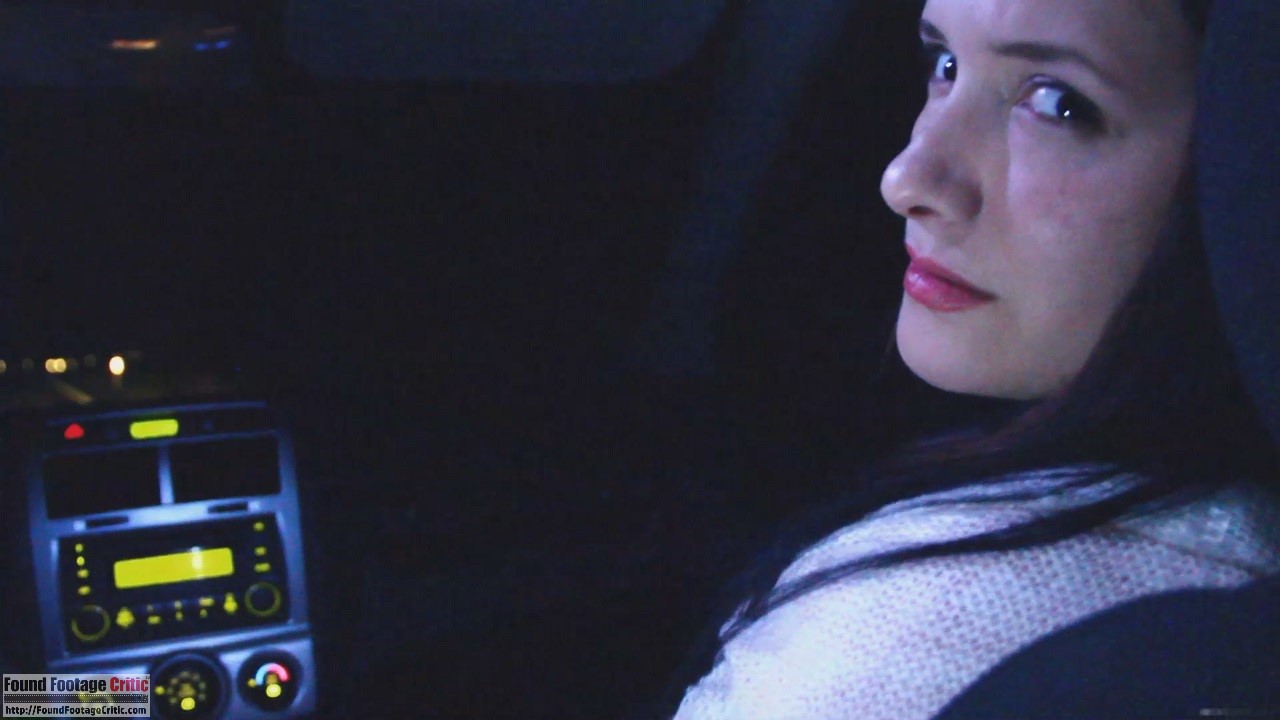
Final Thoughts
FFC: Finally, what are some of your favorite found footage movies?
Michelle Nessk: Whoo. Well, uh, REC. [REC] (2007) is wonderful. Though, I actually like the American remake Quarantine (2008). I very much enjoyed Quarantine. Of course, The Blair Witch Project (1999). My favorite is Home Movie (2008). Have you seen that one? Oh my gosh, it is one of the most disturbing films I’ve ever seen. Ever. Like, it freaked me out. I was looking at every little kid like they were just, like, this f**king monster for at least two weeks after watching. I was just like, “Keep the f**k away from me.” Not all of them. Just most. Home Movies is a really well-done movie. I think it might be, to date, the best found footage film I’ve ever seen. So, it really stands out. And, there’s a few others that I’ve seen that I wish I could remember their names. But, it was like one of those IFC film flurries, where you put it on because you’re just like, “Ooh, horror movie, found footage.”
There’s a certain nuance to found footage that I very much enjoy, and as much as people try to say that the genre of found footage is dead, I’d say that people who say that should probably just keep mumbling into their corners because they obviously don’t get it. But, they should also step out of the f**king way, because people who can do it are going to make it. And the great thing about found footage is that there’s no right or wrong way to do it, you know. It opens a lot of doors for creativity, so I personally think we are just on the precipice of the found footage genre. We haven’t even gotten to the core of it yet. I think it’s gonna get really intense. A lot of good movies are going to come out and some amazing indie filmmakers.
That’s how movies get into your area to be seen: you have to actively ask for it as a fanbase.
FFC: Thank you so much for sitting down with me. O. Unilateralis (2016) is such an amazing, unique, and important movie. I hope it’s going to be a shot in the arm for the genre.
Michelle Nessk: I hope so. And thank you for saying that. I’m really happy to hear that, and I really appreciate it. I hope so too. I hope more people pester me than they already are, and I say pester in the most loving way possible. But, I hope more people pester me about it. And, you know, talk about it on social media. Share the trailer, talk about how you want to see it. That’s how movies get into your area to be seen: you have to actively ask for it as a fanbase.
Found Footage Critic would like to thank Michelle Nessk for taking time out of the day to speak with us and having infinite patience through a bevy of technical glitches.


